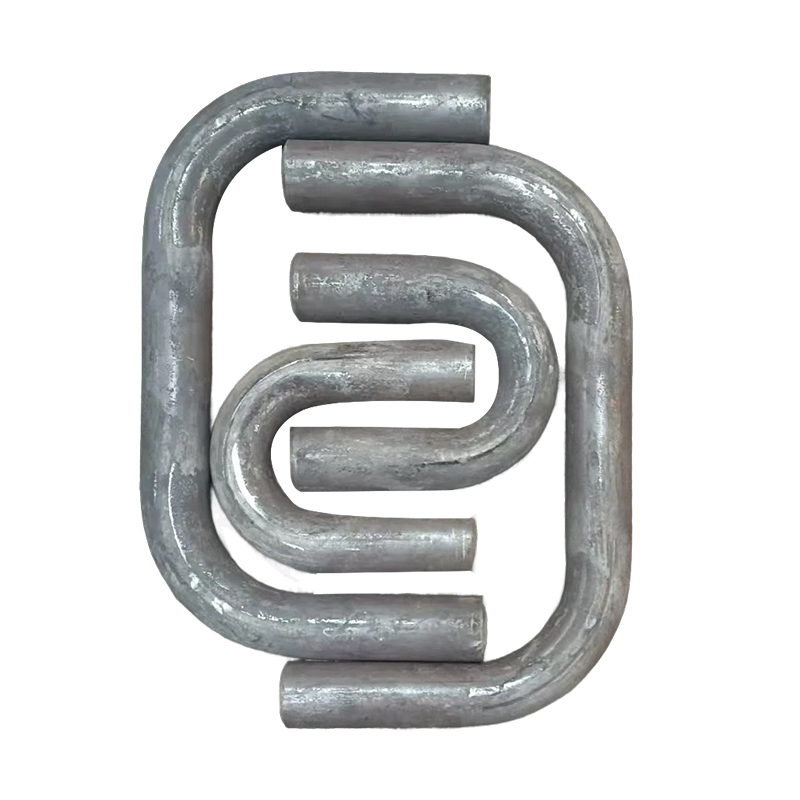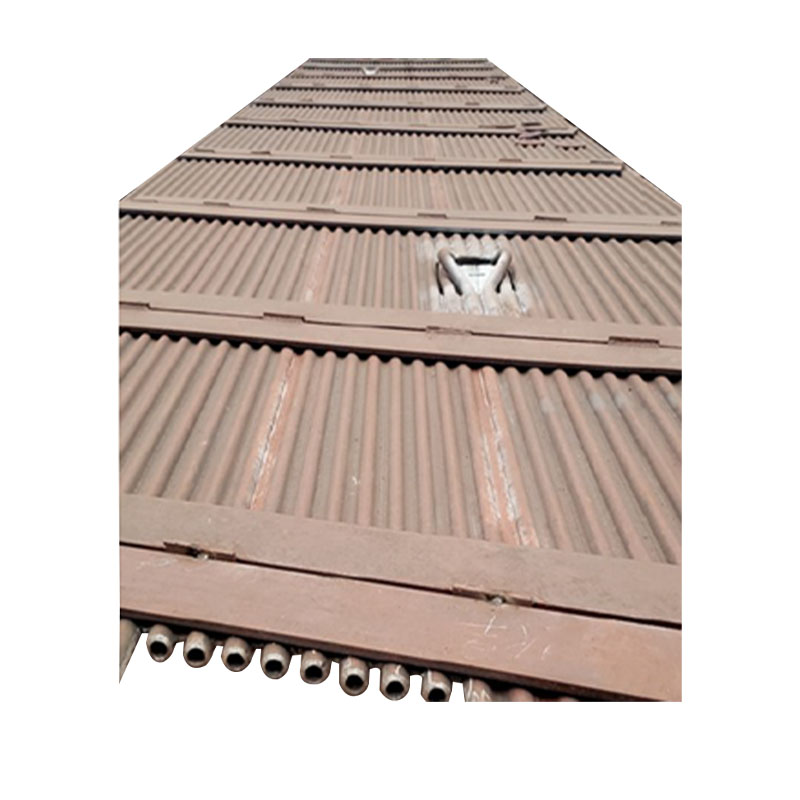How do boiler accessories protect against high-velocity flue gas erosion and extend tube life?
Release Time : 2025-10-27
In thermal power generation, industrial heating, and large-scale central heating systems, boilers, as core thermal energy equipment, operate under demanding conditions of high temperature, high pressure, and high flow velocity. Within the furnace, heating surfaces such as the water-cooled walls, superheaters, and economizers are constantly exposed to high-velocity flue gas. Ash and unburned particles carried in the flue gas, in a semi-molten state at high temperatures, continuously erode the tube surfaces with extremely high kinetic energy, leading to severe wear and corrosion. This "high-velocity flue gas erosion" not only reduces tube wall thickness but can also cause major safety incidents such as leaks and tube bursts, severely impacting boiler operating efficiency and equipment life. To address this challenge, a series of key boiler accessories—such as wear caps, sliders, sealing plates, and flat steel—are widely used in vulnerable areas. Through structural protection, material reinforcement, and system optimization, they effectively protect against erosion and significantly extend tube wall life.
1. Anti-wear Covers (Anti-wear Tiles): The First Barrier Against Erosion
Anti-wear covers are the most common protective accessories in boilers' most susceptible wear areas, such as elbows in water-wall tube rows, around burners, at the flame break, and at the furnace outlet. Typically made of wear-resistant alloy steel, they are curved or U-shaped, tightly wrapping around the exterior of the heating surface tubes, forming a sturdy "armor." When high-velocity flue gas carrying ash particles impacts the tube walls, the anti-wear tiles bear the brunt of the impact, sustaining the majority of the wear and tear, thereby protecting the internal pressure-bearing tubes from direct erosion. Their surfaces can be polished or specially treated to reduce particle adhesion and vortex formation, further reducing the wear rate. Regular inspection and replacement of anti-wear tiles is an effective way to prevent tube wall thinning.
2. Flat Steel and Membrane Wall Structures: Improving Overall Erosion Resistance
In modern boilers, the water-wall structure commonly utilizes a membrane wall structure, a sealed wall formed by welding multiple steel tubes and flat steel. Flat steel not only connects the steel pipes and enhances structural rigidity, but also effectively reduces the area of direct flue gas impact on individual pipes. Furthermore, the welds between the flat steel and the steel pipes are polished to create a continuous, smooth surface, eliminating the "eddy current wear" and "localized erosion hotspots" caused by gaps between the pipes in traditional bare pipe structures. This integrated design significantly improves the overall erosion resistance of the heating surface.
3. Sliders and Suspension System: Reducing Vibration-Induced Fretting Wear
The boiler experiences thermal expansion during startup, shutdown, and load fluctuations. Improper support structure design can easily cause vibration or displacement of the tube bank, leading to fretting wear between the tubes and the support components. Sliders, serving as supports between the membrane wall and the rigid beam, are made of a high-temperature resistant alloy with a smooth surface. This allows the tube bank to slide freely during thermal expansion and contraction, preventing binding and stress concentration. Furthermore, the sliders possess a certain degree of elasticity and wear resistance, absorbing vibration energy and reducing vibration-induced damage to the pipe wall.
4. Sealing Plates and Structural Optimization: Eliminating Flue Gas "Short Circuits" and Localized High-Velocity Zones
Structural gaps or installation errors within the boiler can cause flue gas "short circuits" or abnormally high localized velocity, creating "scour corridors." Sealing plates are used to seal gaps between the tube banks and rigid beams, headers, and furnace walls, ensuring uniform flue gas flow across the heating surface and preventing localized excessive velocity. Furthermore, optimizing burner layout, installing guide plates, and adjusting flue gas flow direction can effectively reduce scour intensity in specific areas.
5. Material Upgrades and Surface Treatment: Improving Wear Resistance from the Source
In addition to structural protection, boiler accessories themselves are also manufactured from highly wear-resistant and high-temperature resistant materials. For example, wear caps often utilize surface treatments such as aluminizing and spraying nickel- or cobalt-based alloys to significantly enhance their resistance to oxidation and erosion. Some high-end boilers also utilize steel pipes with a wear-resistant internal coating in high-wear areas to further extend their service life.
Although small, boiler accessories play an irreplaceable role in protecting against high-speed flue gas erosion and extending the life of the tube wall. Through the physical shielding of anti-wear covers, the structural optimization of membrane walls, the vibration-damping support of sliders, the airflow control of sealing plates, and the use of advanced materials, the boiler system has established a multi-layered, comprehensive protection system. This not only improves the safety and economic efficiency of equipment operation, but also provides a solid guarantee for long-term, high-efficiency, and low-trouble operation of the boiler.
1. Anti-wear Covers (Anti-wear Tiles): The First Barrier Against Erosion
Anti-wear covers are the most common protective accessories in boilers' most susceptible wear areas, such as elbows in water-wall tube rows, around burners, at the flame break, and at the furnace outlet. Typically made of wear-resistant alloy steel, they are curved or U-shaped, tightly wrapping around the exterior of the heating surface tubes, forming a sturdy "armor." When high-velocity flue gas carrying ash particles impacts the tube walls, the anti-wear tiles bear the brunt of the impact, sustaining the majority of the wear and tear, thereby protecting the internal pressure-bearing tubes from direct erosion. Their surfaces can be polished or specially treated to reduce particle adhesion and vortex formation, further reducing the wear rate. Regular inspection and replacement of anti-wear tiles is an effective way to prevent tube wall thinning.
2. Flat Steel and Membrane Wall Structures: Improving Overall Erosion Resistance
In modern boilers, the water-wall structure commonly utilizes a membrane wall structure, a sealed wall formed by welding multiple steel tubes and flat steel. Flat steel not only connects the steel pipes and enhances structural rigidity, but also effectively reduces the area of direct flue gas impact on individual pipes. Furthermore, the welds between the flat steel and the steel pipes are polished to create a continuous, smooth surface, eliminating the "eddy current wear" and "localized erosion hotspots" caused by gaps between the pipes in traditional bare pipe structures. This integrated design significantly improves the overall erosion resistance of the heating surface.
3. Sliders and Suspension System: Reducing Vibration-Induced Fretting Wear
The boiler experiences thermal expansion during startup, shutdown, and load fluctuations. Improper support structure design can easily cause vibration or displacement of the tube bank, leading to fretting wear between the tubes and the support components. Sliders, serving as supports between the membrane wall and the rigid beam, are made of a high-temperature resistant alloy with a smooth surface. This allows the tube bank to slide freely during thermal expansion and contraction, preventing binding and stress concentration. Furthermore, the sliders possess a certain degree of elasticity and wear resistance, absorbing vibration energy and reducing vibration-induced damage to the pipe wall.
4. Sealing Plates and Structural Optimization: Eliminating Flue Gas "Short Circuits" and Localized High-Velocity Zones
Structural gaps or installation errors within the boiler can cause flue gas "short circuits" or abnormally high localized velocity, creating "scour corridors." Sealing plates are used to seal gaps between the tube banks and rigid beams, headers, and furnace walls, ensuring uniform flue gas flow across the heating surface and preventing localized excessive velocity. Furthermore, optimizing burner layout, installing guide plates, and adjusting flue gas flow direction can effectively reduce scour intensity in specific areas.
5. Material Upgrades and Surface Treatment: Improving Wear Resistance from the Source
In addition to structural protection, boiler accessories themselves are also manufactured from highly wear-resistant and high-temperature resistant materials. For example, wear caps often utilize surface treatments such as aluminizing and spraying nickel- or cobalt-based alloys to significantly enhance their resistance to oxidation and erosion. Some high-end boilers also utilize steel pipes with a wear-resistant internal coating in high-wear areas to further extend their service life.
Although small, boiler accessories play an irreplaceable role in protecting against high-speed flue gas erosion and extending the life of the tube wall. Through the physical shielding of anti-wear covers, the structural optimization of membrane walls, the vibration-damping support of sliders, the airflow control of sealing plates, and the use of advanced materials, the boiler system has established a multi-layered, comprehensive protection system. This not only improves the safety and economic efficiency of equipment operation, but also provides a solid guarantee for long-term, high-efficiency, and low-trouble operation of the boiler.







